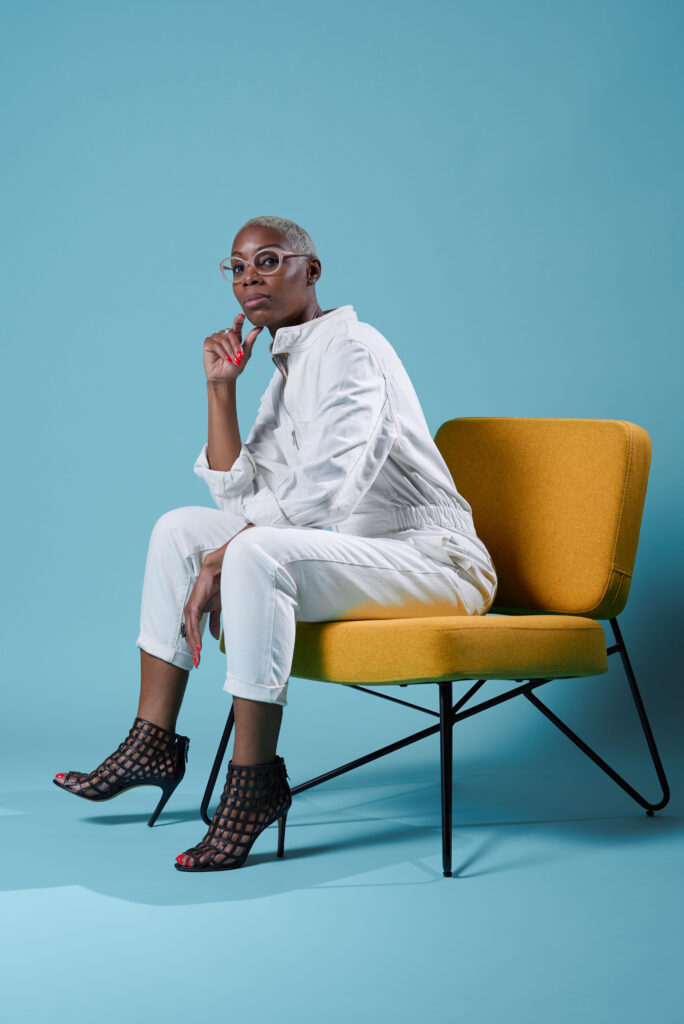Combining circular economy, through upcycling, and social and professional integration, this is the ambitious project designed and executed by Hawa Sangaré in the midst of a health crisis. Twenty years of expertise in integration and vocational training enabled him to identify and remedy certain shortcomings, articulating his project around vocational training, self-esteem and autonomy. Seven months after the launch of the association and the #2ndeVie webshop, Hawa Sangaré looks back on the origin of this resolutely forward-looking initiative and makes a first assessment.

What prompted you to create an integration structure?
I was trained as a clinical psychologist and despite my hunger for support, it was pure chance that I discovered integration when I dropped out of my studies. I started at the ANPE, but quickly wanted to know more about integration and support. So I worked with young people in local integration, RSA recipients, but also in detention centers, mainly in the associative field, and finally in integration companies, because I understood the importance of combining economics and social† This type of structure allows to be more in the guidance than in the assistantship, and allows those involved to have a professional project while gaining independence. Through these twenty years of experience in the field, I have understood many things about integration, and in particular the need to restore the autonomy and self-esteem of those who have suffered from social isolation and exclusion from work.
How was HAWA for women born?
At an integration company, I realized that the beneficiaries were unable to stay in their jobs after the course ended. They failed to be fully autonomous when they were no longer supervised, and that is precisely because we did not rely on self-esteem and autonomy. So I decided to complete my education and create my first structure, H-strategy, in 2014. This allowed me to use my expertise for integration companies and develop workshops on self-confidence, public speaking, image advice and interview preparation. † And that made all the difference. People not only got faster access to work, but mostly stayed there.
At the same time, I realized that in two decades the number of women in vulnerable situations had exploded. And whatever the profile of these women, they are always offered positions subject to hardship, with atypical hours, without even listening to their desires, their aspirations and the limitations that come with the daily life of single mothers. . All this matured in my head and I decided to launch myself and create a device that was meant to integrate these women on a sustainable basis, to restore their dignity, without projecting myself into their place, and to offer them a place where they can all tools necessary for their autonomy.
And fashion, a universe that is a priori far removed from integration, came to fit into your project. Why this choice?
I was looking for an activity support to set up this device, and I came across the clothing waste law. It sounded like a no-brainer. I love fashion because I have always been aware of the power of clothing on self-esteem. To be able to bet on sustainable fashion, and therefore the circular economy, to give these women back their autonomy was ideal in my view, simply because it is the future and that means a lot. HAWA for women puts the glamor of fashion, and sometimes even luxury, at the service of integration to promote the emancipation and autonomy of women. I created this project in full confinement, then the structure opened in 2021 and the first employees were hired last October.
How does this translate into everyday life?
We have to distinguish between the two parts of this project: there is HAWA for women, the association, the integration site, and #2ndeVie, the online store that gives new life to the clothes and to the employees they transform. Every day we recover new unsold items that we resell at negotiated prices, as well as leftover fabric that we upgrade through upcycling.
This second part dedicated to upcycling is developing very quickly because we meet the needs of brands by increasing their dormant inventories, even parts that have defects. Remnants of recovered fabrics and clothing can be turned into kits, computer cases, tote bags, masks and even new clothing. The brands didn’t know us at first, but they soon got involved, whether it was for the inclusion of women or an eco-responsible approach. There is a genuine desire on their part to support the association, to the point where one-off collaborations have grown into long-term partnerships, or brands now give us their unsold products to make gifts for their associates.
What is the assessment, seven months after the recruitment of the first employees?
In a few months we went from 10 to 25 employees. It’s a great pride! We have changed a lot of things, especially in terms of equipment, since we started with family sewing machines to gradually move to industrial machines, and we will now have a second room entirely devoted to clothing. Nowadays, more and more stylists come directly to us because word of mouth works well. I can’t reveal everything for confidentiality reasons, but we have some great collaborations coming up, and even a fashion show that should see the light of day.
Things are also changing on the part of the employees. Some have already been able to move from the social hotel to a real apartment, knowing that others will also benefit from it from September. There are also proposals for permanent positions, changes and many responsibilities that contribute to the skills developed in recent months. It is awesome. We are progressing little by little, we are very happy. And I’m hopeful for the future, because the project makes sense… It’s teamwork with a lot of talent.
For more information, visit the HAWA for women website.
(ETX Daily Up)